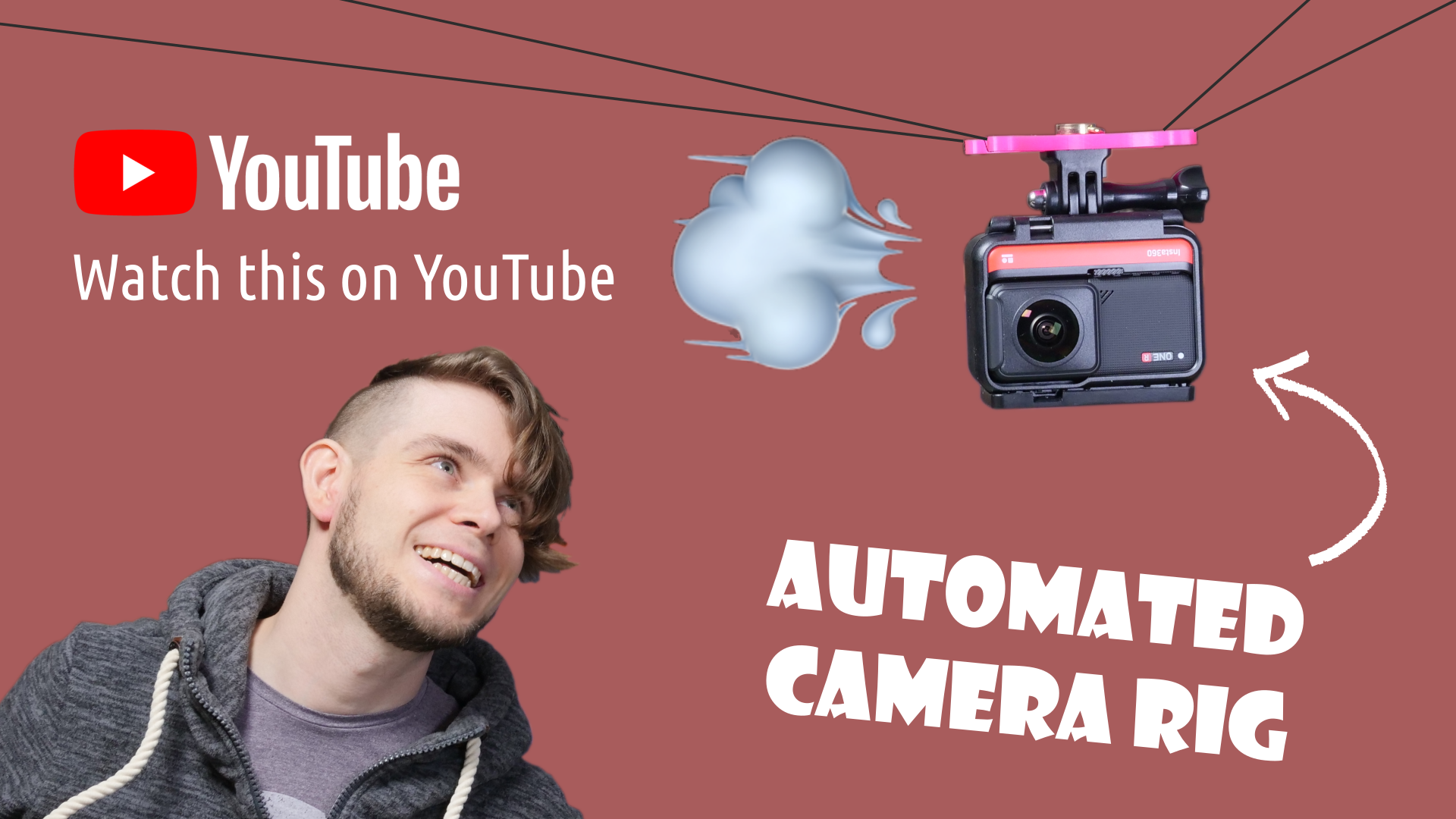I built a cable camera


Have you ever been amazed by the Spidercam or Skycam systems that are used in sports stadiums? I have! And I decided I that I want my own camera robot that works like this.
In this video, I present my first prototype. In the future, I hope to improve this a lot and add a ton of new features.
You can find this project on GitHub: https://github.com/matou/CableCamera
Thanks to David for helping me with this video. Find David's channel here: https://www.youtube.com/channel/UC0FWNSkss4z5l-yn20lbtrQ
You can find scanlime's Tuco Flyer video here: https://www.youtube.com/watch?v=JU6omrP2iFU
Things that I improved or tried in this month's project
This was an eventful month full of learning moments for me.
The first thing concerns video editing. For the last two videos I had issues with my computer being quite unresponsive during editing. My computer is pretty old and cannot handle editing very well. I was using Davinci Resolve and had recently upgraded to version 17 of the editing software. There are ways to get smoother editing by using optimized media or proxy media instead of the high-resolution footage during editing. However, in the past, I couldn't get it to work reliably. So I decided to give Blender another try. Blender is a 3D modelling software, but it is also a decent video editor and I've been using it before I switched to Davinci Resolve. I edited a test video to see if it works for me. The editing is fine and also worked smoothly when using low-resolution proxy media. However, the final render takes forever in Blender. It uses only a single core of my CPU and doesn't utilize the GPU. So a 15 minute video took about 8h to render in 1440p. This is unacceptable. So I went back to Davinci Resolve and had another look at the proxy media feature. Resolve somehow fails to generate proxy files for most of my footage. However, I was able to convert the files manually with ffmpeg and tell Resolve to use those as proxies. That worked splendidly and I couldn't be happier with it.
Another major thing was that this was the first video that I didn't film by myself. My friend David helped me out with it. It was a very interesting experience and I was pretty nervous as I had to prepare pretty well in order to use the time we allocated efficiently. In the end, it worked out well and I'll probably do some collaborations like that again in the future. Although, I also learned that doing everything myself is pretty cool, too, because I'm super flexible.
I bought an action cam (the Insta360 One R) for this project. And somehow it didn't occur to me earlier, that I could have been using my phone as a second camera for some of the shots. Anyway, I will probably be filming a second angle more often in the future.
I am quite pleased with parts of the audio this time. The sound is pretty good when I'm on-camera and also in parts of the voiceover. I changed how I wear the lapel mic in this video. I think this is better, because in the last video, I had some noise from my clothes rubbing against the microphone.
Some of the voiceover isn't as good as I would like. I'm not sure why. I will have to continue improving my audio recording.
This is also the first time, that I had a more serious look at the animation features of Davinci Resolve, called Fusion. There is still a lot to learn for me, but I think I got the basics and I'm pretty happy that I can do some simple animations now.
One thing that I learned during the publication: I don't want to schedule the premiere on YouTube right after uploading the video. For one, the video got a dislike right after publication of the link, even though (or maybe because) the video isn't available, yet. It also got a spam comment. Also, if I first mark the video as private, then I have time to check how it looks on YouTube.
